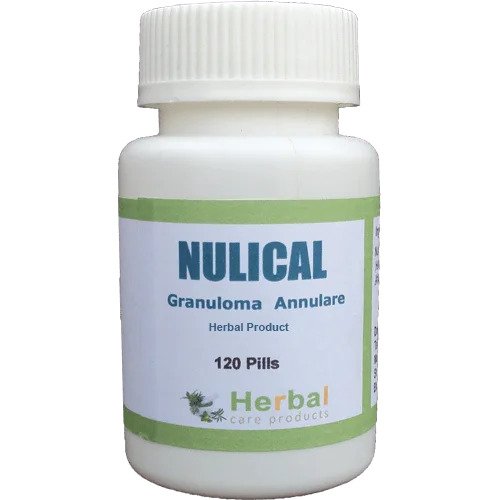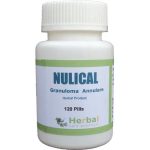Uncovering the Underlying Causes of Granuloma Annulare and How to Treat It

 Introduction to Granuloma Annulare: Symptoms, Causes and Treatment Options
Introduction to Granuloma Annulare: Symptoms, Causes and Treatment Options
Granuloma annulare is a benign skin condition that affects individuals of any age. It is characterized by round bumps that form in a ring pattern, but it can also take on other shapes. Though the condition is not considered serious, it can cause physical and psychological discomfort. It’s important to understand the underlying causes of granuloma annulare in order to determine the best treatment options for managing the symptoms.
Granuloma Annulare Symptoms: Typically, granuloma annulare appears as round or oval-shaped bumps on the skin which are usually red or flesh-colored. They often look like large hives and tend to form in clusters or rings. They may occur on any part of the body but most commonly appear on hands, feet and elbows. Sometimes they can be itchy or tender, and they may become raised with time.
Granuloma Annulare Causes: The exact cause of granuloma annulare is unknown but there are some theories about what may trigger its onset. One possible cause is an immune system reaction due to certain types of infections such as viral infections or fungal infections. Exposure to certain medications, allergies, hormonal changes and sun exposure may also be related to granuloma annulare flare-ups.
Diagnosis & Management: A diagnosis of granuloma annulare is generally made based on a physical examination of the skin. It’s important for your doctor to rule out any other potential causes such as contact dermatitis or eczema before making the diagnosis. Treatment options vary depending on the severity as well as response to treatment; these can range from topical creams and ointments to light therapy or injections.
Granuloma Annular Treatment Options: Treatment for Granuloma Annulare, topical creams and ointments are often sufficient in reducing symptoms such as itchiness and redness. Corticosteroid creams are commonly used for this purpose as they help reduce inflammation as well as improve healing time. In more severe cases where lesions have become raised or inflamed, light therapy has been found to be beneficial in treating granuloma annular.
Conclusion: Although Granuloma Annular is considered benign condition that does not pose serious health risks, it can still be uncomfortable for those who suffer from it. Knowing more about its underlying causes and available treatments can help you manage your symptoms more effectively so you can live your life comfortably without it interfering too much with your everyday life.
Diagnosing Granuloma Annulare: What Tests are Used?
Granuloma annulare is a chronic skin condition that is characterized by reddish bumps or lesions that form in a ring pattern. It can appear on any part of the body and typically does not cause any pain or discomfort. In some cases, it may be difficult to diagnose granuloma annulare due to its similar appearance to other skin conditions. However, there are certain tests that can be used to help make an accurate diagnosis.
Granuloma Annulare Treatment, Symptoms and Causes
In general, Granuloma Annulare Natural Treatment focuses on symptom relief rather than curing the condition itself. Treatment options range from topical creams and ointments to phototherapy or laser therapy. It is important to note that these treatments do not address the underlying cause of granuloma annulare, which is still unknown; therefore, symptoms may recur even after successful treatment. The exact cause of granuloma annulare remains unclear; however, there are some factors that may increase one’s risk of developing this condition such as immunological disorders, diabetes mellitus, HIV infection or exposure to certain medications.
Diagnosis and Management
In order to how to get rid of granuloma annulare accurately, a medical professional will usually take a biopsy of the affected area and send it off for further testing. This allows them to rule out other conditions and confirm whether the lesion is indeed caused by granuloma annulare. In addition to this test, they may also use imaging techniques such as X-rays or MRIs to examine the internal structures affected by this condition in greater detail. Once a diagnosis has been made, medical professionals typically recommend lifestyle changes as part of their treatment plan for managing granuloma annulare. These changes usually involve avoiding potential triggers such as exposure to sunlight or taking certain medications that have been known to aggravate the condition in some individuals. Additionally, medical professionals may suggest keeping the affected area clean with mild soap and moisturizer and covering it up with clothing or bandages when necessary.
Conclusion
In conclusion, diagnosing granuloma annulare can be difficult since it looks very similar to other skin conditions; however, taking a biopsy and using imaging techniques can help provide an accurate diagnosis. Once diagnosed with this condition it is important for individuals to make lifestyle adjustments in order manage their symptoms and avoid potential triggers. Granuloma Annular Treatment should focus on symptom relief rather than curing the condition itself.
Treatment for Granuloma Annulare: Medications, Surgery and Home Remedies
Granuloma annulare treatment involves medications, surgery, and home remedies to reduce the discomfort of the skin rash. The underlying causes of granuloma annulare can range from an overactive immune system to hormone imbalances and environmental allergens or irritants. To diagnose granuloma annulare, a doctor will usually begin by assessing the patient’s medical and family history. Next, they may perform a skin biopsy or a blood test to confirm the diagnosis. The goal of treatment is to reduce inflammation and prevent scarring. Depending on the severity of the symptoms, medications such as corticosteroids, topical retinoids, antibiotics or antifungals may be prescribed. Corticosteroid injections are also sometimes used in more severe cases. Additionally, cryotherapy (freezing) is sometimes used to treat localized cases of granuloma annulare, and laser therapy and Nulical can help reduce itching and inflammation. In some cases where the granuloma annulare does not respond to conventional treatments or if it covers large areas of the body, surgery may be necessary. Surgical options include excisional surgery (the removal of the affected skin), dermabrasion (abrading away damaged skin layers) and laser ablation (destroyed damaged tissue using lasers). Home remedies are also commonly utilized for treating granuloma annulare. Over-the-counter creams containing aloe vera can help soothe inflammation while moisturizers can help keep skin hydrated and healthy-looking; both are helpful in relieving itchiness associated with granuloma annularis symptoms. Many people have had success with home remedies for granuloma annulare applied directly to inflamed areas; however, it’s important that people first consult their doctor before using any home remedy as some natural ingredients could worsen existing conditions or interact with certain medications.
Prevention and Management of Granuloma Annulare: Tips and Advice
Granuloma Annulare is a chronic skin condition that consists of firm, reddish bumps or nodules arranged in a ring or arc shape. Although the exact causes are yet to be discovered, there are certain factors associated with Granuloma Annulare that can help uncover its underlying causes and ways to treat it. To prevent and manage Granuloma Annuare, it is important to understand the symptoms, causes, diagnosis and treatment options available. The most common symptom is a rash consisting of firm, round bumps that may be red, pink or skin-colored. These bumps are usually painless but can cause itching and burning sensations in some cases. They usually occur on the hands or feet but can also appear on other parts of the body. Granuloma Annuare has been linked to certain environmental factors such as exposure to ultraviolet radiation from the sun or artificial sources like tanning beds, insect bites, allergies to certain medications such as antibiotics, contact dermatitis caused by exposure to irritants such as soaps and detergents, or even an underlying autoimmune disorder like rheumatoid arthritis. In some cases, there may be no identifiable cause for the condition. If you suspect you may have Granuloma Annuare, it is best to consult your doctor for diagnosis and treatment options. In certain cases they may refer you for further tests such as biopsy or blood tests if needed. Treatment usually consists of topical corticosteroids applied directly on the affected area which helps reduce inflammation and itching. Other medications such as oral steroids may also be prescribed by your doctor if needed. In addition to medical treatment there are several lifestyle changes you can make such as avoiding direct sun exposure; using a sunscreen with an SPF 30 or higher when outdoors; wearing protective clothing such as long sleeves or pants; avoiding irritants like soaps and detergents; keeping your skin moisturized; and taking antihistamines if itching persists after topical treatments have been applied. It is also important to keep your affected areas clean by washing with mild soap regularly to prevent infection from bacteria that could worsen the condition. Avoiding picking at bumps will help reduce inflammation as well as scarring that could occur from scratching them open. Uncovering the underlying causes of Granuloma Annuare can be challenging due its diverse range of triggers however managing this condition depends largely on taking preventive measures while seeking proper medical attention when needed.
Conclusion: How to Live with Granuloma Annulare
Granuloma Annulare is a skin condition that can cause raised, red or brown rings on the skin. Though usually benign, it can cause itching and discomfort. Fortunately, there are many different treatment options like Granuloma Annulare Natural Treatment available to help manage the condition and improve the patient’s quality of life. The first step in treating Granuloma Annulare is to identify its underlying causes. These can include an allergic reaction, an autoimmune disease, or an infection. Once the underlying cause is identified, a doctor will recommend an appropriate treatment option based on that diagnosis. This could include medications such as topical corticosteroids, phototherapy, cryotherapy or intralesional steroid injections. Additionally, lifestyle changes such as avoiding certain allergens or taking steps to maintain good hygiene may also be recommended in order to reduce symptoms and prevent further flare-ups of Granuloma Annulare. Overall, it is important for those living with Granuloma Annulare to understand the underlying causes of their condition in order to best treat it and minimize the symptom’s impact on their life. Knowing what treatments are available can help them make informed decisions about their health and wellbeing. With a personalized plan tailored to each individual’s unique needs and preferences, those living with Granuloma Annulare can take steps towards managing their condition and living a happy and healthy life.

